The Kondaveedu fort was a well-fortified city and was the capital during the reign of Reddy kings and later used by the French and the British as a garrison.
In a discovery that has pushed back the history of the Kondaveedu fort (in the Guntur district, Andhra Pradesh) to 3rd century AD, a Buddhist circular stupa and pillared pavilion (sila mandapa) datable to the Ikshvaku times, have been unearthed at the fort.
E. Sivanagireddy, Buddhist archaeologist and CEO of the Cultural Centre of Vijayawada and Amaravathi along with K. Sivareddy, convenor, Kondaveedu Development Committee and Subhakar Medasani, secretary, Amaravathi Buddha Vihara, visited the site on Sunday.
Sighted under a temple
Mr. Sivareddy showed them the site where the remains of the stupa were exposed from underneath a sunken and dilapidated Siva temple of the Reddy period during the process of dismantling it for reconstruction.
“This site is a chaitya used by Buddhist monks to worship and used as a spiritual retreat centre,” said Mr.Siva Reddy.
The Kondaveedu fort was a well-fortified city and was the capital during the reign of Reddy kings and later used by the French and the British as a garrison.
A freelance archaeologist Kadiyala Venkateswara Rao had earlier unearthed marble stones at the same site indicating the Buddhist links.
Ikshvaku art style
Mr. Sivanagi Reddy said that the stupa structure which was 4.5 ft tall with a diameter of 12.5 ft consisted of 10 layers of well-dressed Palnadu limestone, which the Buddhists preferred.
The bottom layer was carved with a lotus flower design representing the mature phase of typical Amaravathi School of Art as seen at the pedestal of the world famous Nagarjunakonda Buddha image, thus giving clue to conclude that the stupa was built during the Ikshvaku period.
Mr. Reddy and the team appealed to the State Department of Archaeology and Museums to reconstruct the dismantled Siva temple at another place and protect the Buddhist stupa.
Panel recovered
It is also learnt that a beautiful sculptural panel depicting animals and floral motifs in Ikshvaku idiom was also recovered from the foundations of the stupa, along with a Brahmi label inscription (not legible ) which is now in the possession of the Department of Archaeology and Museums.
Interestingly, the team, while inspecting the levelling work going on at the parking area in the site, stumbled upon a beautiful limestone pillar carved with a half lotus medallion flanked by a bunch of flowers in the Ikshvaku art style.
P. Samuel Jonathan - The Hindu [January 28, 2019] photo credit: T.Vijaya Kumar


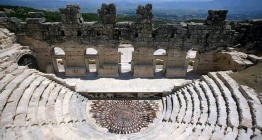

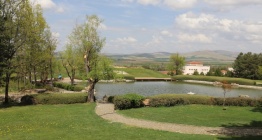
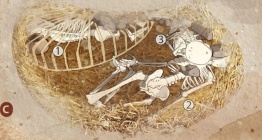

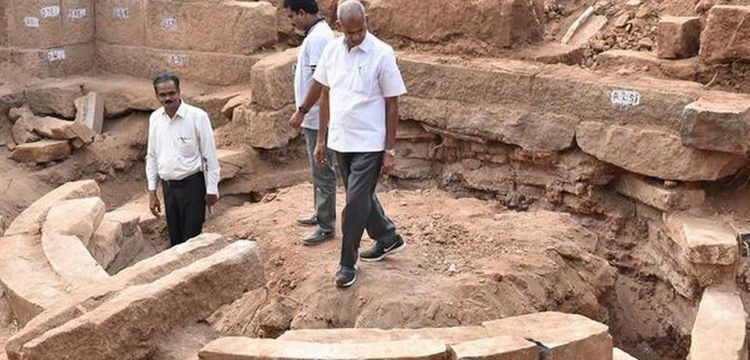
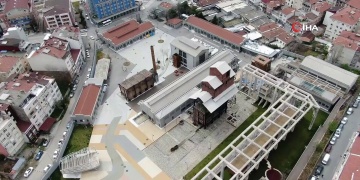 İklim Adaleti Perspektifinden Madencilik Çalıştayı 20 Nisan Cumartesi günü Kadıköy'de
İklim Adaleti Perspektifinden Madencilik Çalıştayı 20 Nisan Cumartesi günü Kadıköy'de  TÜROB Başkanı Müberra Eresin: Bu yıl otel doluluklarında artış olacağını umuyoruz
TÜROB Başkanı Müberra Eresin: Bu yıl otel doluluklarında artış olacağını umuyoruz  TÜRSAB Başkanı Firuz Bağlıkaya: Hedefimiz 60 milyar dolar gelir 60 milyon turist
TÜRSAB Başkanı Firuz Bağlıkaya: Hedefimiz 60 milyar dolar gelir 60 milyon turist 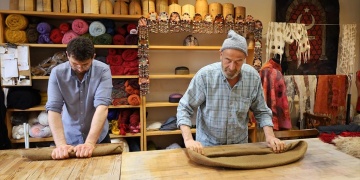 Antep İşi Nakışı, Keçe Yapımı ve Yoğurt UNESCO'ya aday üç kültürel mirasımız oldu
Antep İşi Nakışı, Keçe Yapımı ve Yoğurt UNESCO'ya aday üç kültürel mirasımız oldu 




